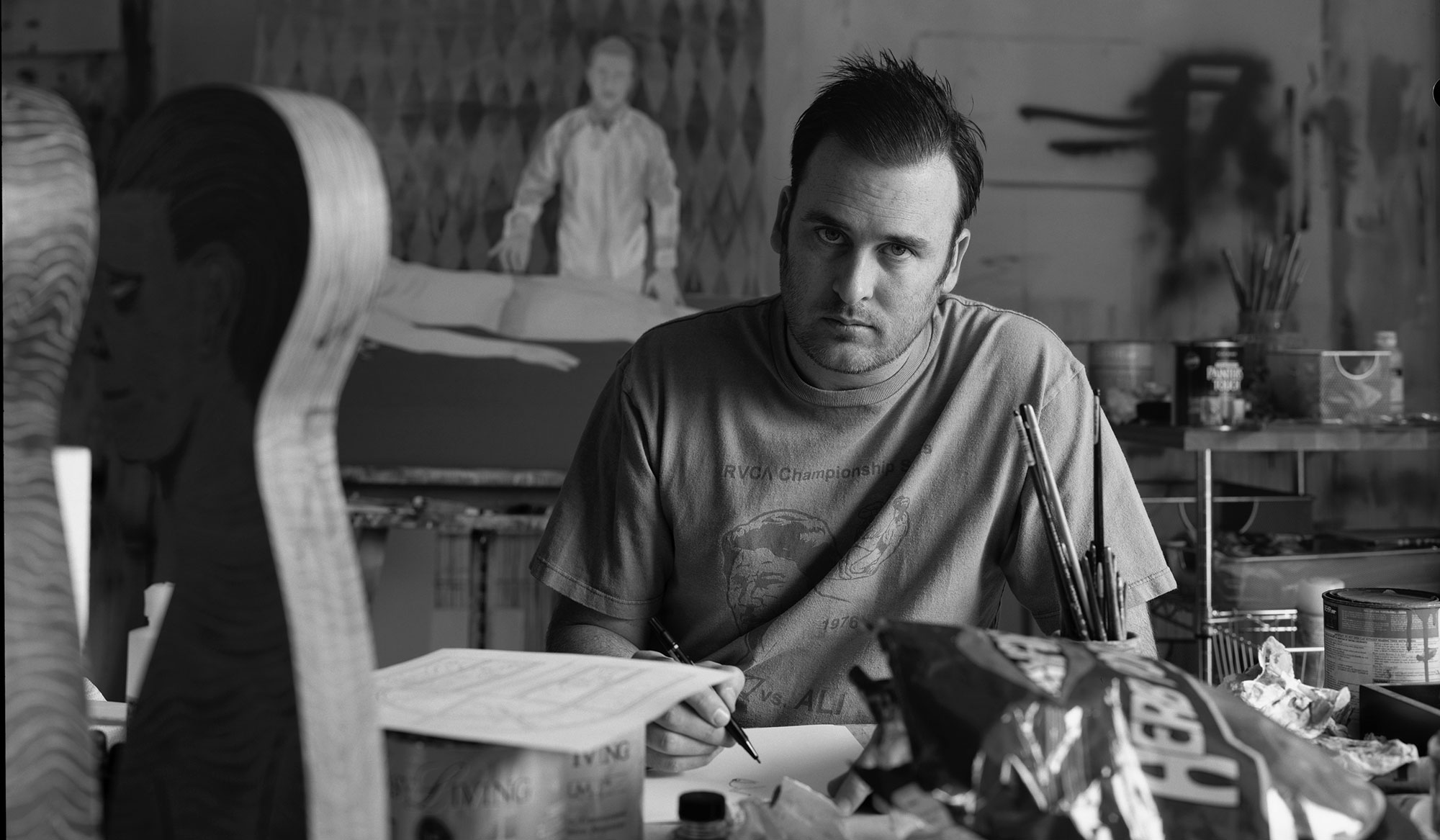
Words:
It's nothing new to see a skateboarder that has become something other than a skateboarder. A lot of them start clothing brands or work on films. Templeton is an autodidact though, one that has found success in nearly everything he has done.
Share:
-


It's perhaps a little bit of a white lie to say that he became all of those things. He sort of always has been. Not in the way of those skills always being a part of his essence, but more like his work with Toy Machine - his ideas and artistic supervision, spanned those fields. He was never defined as a photographer though, nor a designer. Those were just parts of a company - one that he made a symbol of skateboarding for young kids growing up in the 90s.
Being surrounded by all these artists, in various fields, seemed to influence him by osmosis. He was constantly getting shot for skate magazines (first photographed 50-50 on a handrail ever printed) but those photographers also shot other stuff. Similarly, he was also often in contact with designers for boards and clothing.
Being embedded in the skate scene meant that his life was spent on streets all over the world - he was in a very good situation to catch the eccentric people that were wandering around him. Being involved in skateboarding from a young age gives you a unique perspective on art - you're not someone learning in a class, you're submerged in it, always doing. It's poetry in motion.

His designs for Toy Machine, the company he founded in 1994, had a naivety that resonated with people. They weren't complicated or complex - their impact was straight-forward and immediate. The bold colours and the brand's devil mascot became synonymous with the earliest days of street skateboarding.
Their video output was instrumental to the development of the skateboarding aesthetic. Welcome To Hell was released in 1996 and Good and Evil in 2004. Both were leaders in the scene and featured some of early street skating's biggest names.
Despite being a major brand, the managed to avoid the mainstream restrictions that others had, retaining the essence of Templeton's outlook. He was the eternal misfit, never able or willing to fully fit in. He embraced this mentality in his skateboarding and he transferred it to the brand's image. Wearing or riding Toy Machine was a statement back then. The clued up skateboarder that knows their art, their music, their style.

Templeton's output is a holistic one - all coalescing organically rather than being planned out. Although always being invested in art through Toy Machine, his solo work is a markedly different style with a completely different tone to boot. Given that his whole life had been surrounded by people trying to capture him or his ideas - his paintings and drawings often have them as a focal point. He flipped the script.
His artwork still carries some of the similar folk-art feelings that his skateboarding graphics did, retaining the intimacy of his photographic output too - except the paintings are more thought through, more posed. Templeton was growing up, his artwork was maturing.
They exist as a reflection of his Californian life - using simple colours and capturing scenes in a way reminiscent of David Hockney. They capture lives that all seem to have something missing from them. Templeton the artist is still an outcast and it's through capturing people like him - with ink or with celluloid that he seems most comfortable.
Templeton has made it clear that he keeps these strands of his life separate. He doesn't want to be the artist known for being the pro skater or vice versa - he wants everything to speak for itself. Interestingly enough though, one wouldn't be what it is without the other. Not that they are some kind of crutch, more like constructive internal influences. That they exist in different realms means they can freely draw strength from each other.
From pro skater, to company owner, his life hasn't really been defined by either of those. His role has always been more of an observer - someone who looks and conveys. It just so happens that people liked it enough to buy into it too. There are many sides of Ed Templeton, but they don't fight, they don't go to war. The sides support each other, push each other on. He looks at the world and they decide which way to express it.






See more here: www.instagram.com/ed.templeton
Share:
-


More like this:




